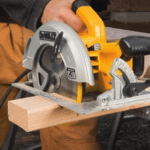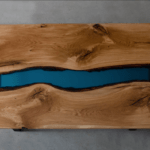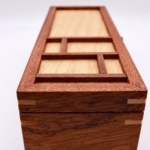It seems like a weird post for a woodworking website, but not for me. I’ve been playing guitars for over 25 years, while I’ve only been woodworking for nine years. I started seeing how these two hobbies could eventually merge a few years back, but I have yet to build my first guitar.
In any case, I’ve been researching how to deck or block a Floyd Rose tremolo. I’ve used Floyd Rose guitars, mainly on my old Ibanez RG. Since I sold it off ten years ago, I’ve either had hardtail guitars (like a Les Paul) or a Fender-style tremolo on my guitars.
In 2022, I bought my Fender Stratocaster with a Floyd Rose Special, and it was a nightmare to keep that thing in tune. Once I upgraded it to the original Floyd Rose, all the annoying issues disappeared, and I started to enjoy using a Floyd Rose bridge. Like most guitars equipped with a Floyd Rose, it was a floating bridge that could move up or down.
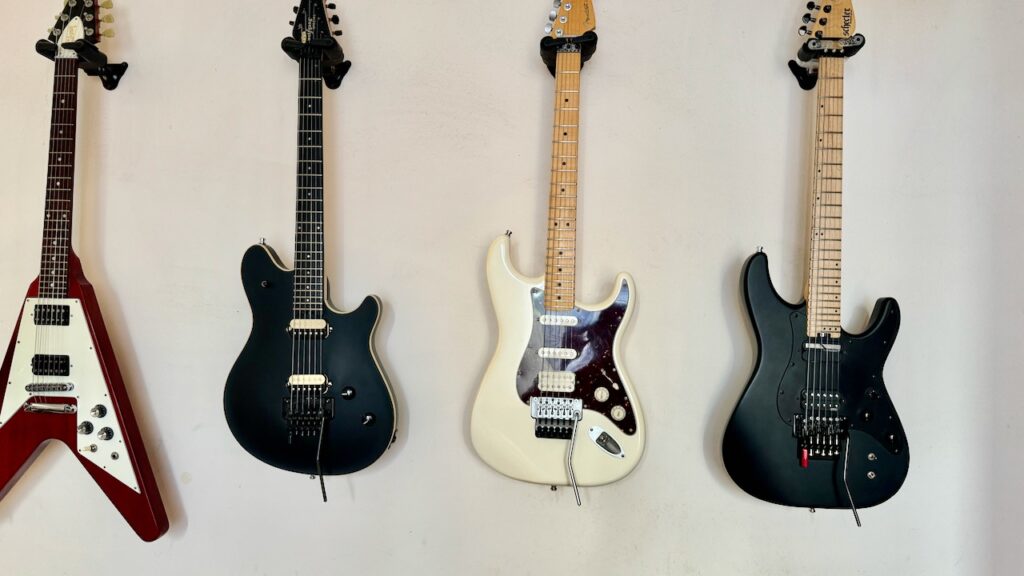
I now have two more Floyd-equipped axes: an EVH Wolfgang Special (made in Mexico) and a Schecter Sun Valley Super Shredder. Both guitars use a licensed version of the Floyd Rose, but they work just as well.
Decked Vs Blocked Floyd Rose
A “decked” Floyd and a “blocked” Floyd are two different things in my mind. A decked Floyd rose either rested on the guitar’s body or had some other mechanism blocking it from being pulled back. You can still do dive-bombs with it.
On the other hand, a “blocked” Floyd Rose means that the bridge is fixed and cannot move in any direction. People usually block a Floyd Rose because they either don’t care about using it or have too much trouble keeping it in tune. Blocking the Floyd still gives you a stable fixed bridge guitar with double-locking and fine-tuning capabilities.
I’ve never quite understood the point of a decked Floyd Rose. To me, this limits the Floyd’s functions with no side benefit. Why would anyone want to do that?
Why Should You Deck a Floyd Rose?
My experience with the EVH Wolfgang changed all that.
I only bought it because of Eddie, the D-Tuna (a nifty tool that allows you to drop-D without re-tuning the guitar), and the sick look of the stealth black finish. I could not understand why they made it a dive-only Floyd other than “That’s how Eddie liked it.” I wished the Floyd was free-floating like my Fender.
However, after playing all three Floyd-equipped guitars for months, I’ve realized some essential truths about a decked Floyd Rose guitar:
- The D-Tuna only works on a decked Floydd Rose. I tried and failed to use it on my Fender last year and could not figure out why. Later, I understood that it would not work on a floating Floyd Rose since detuning the low E string will cause the floating bridge to move forward slightly, throwing all the other strings out of tune.
- A decked Floyd Rose is easier to play. Bending strings (and tapping while bending strings) is easier since you don’t have to compensate as much as you would with a floating bridge. For this to happen, you need to increase the spring tension on a decked Floyd to the point where bending a string does not move the term upwards. Doing this will result in a stiffer experience for dive bombs, but I tend to bend strings way more than doing dive bombs anyway.
- A decked Floyd Rose is more stable. It is easier to tune and goes out of tune less compared to a floating trem. If you change your tuning from E to D#, you don’t need to mess with the spring or the float since it does not move backward.
- A decked Floyd Rose sounds better. This is subjective, but in my experience, it sounds better because it has more direct contact with the guitar’s body. I can hear better clarity and sustain with my EVH Wolfgang compared with my other two guitars.
Available Solutions to Decking Your Floyd
From my research, I see these three tools as the most common solution to decking a Floyd Rose.
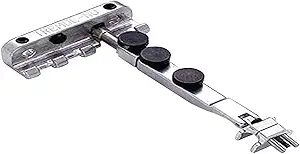
The first is Tremolno. From my research, this tool works well and can deck your Floyd rose, block it completely, or allow it to float. The clamp locks to your brass block and the three adjustment wheels let you control how the Floyd Rose works. The provided claw replaces the claw on your guitar. It is a clever solution if you can afford the $65 or so for it.
The second is a stabilizer. It stabilizes your Floyd Rose by adding one or two more springs to push back, limiting the effect of the springs pulling on the brass block. You can increase the tension of this tool to make your Floyd more stable and play better, but it does not fully deck your Floyd since you can still pull back. It also requires drilling four small holes.
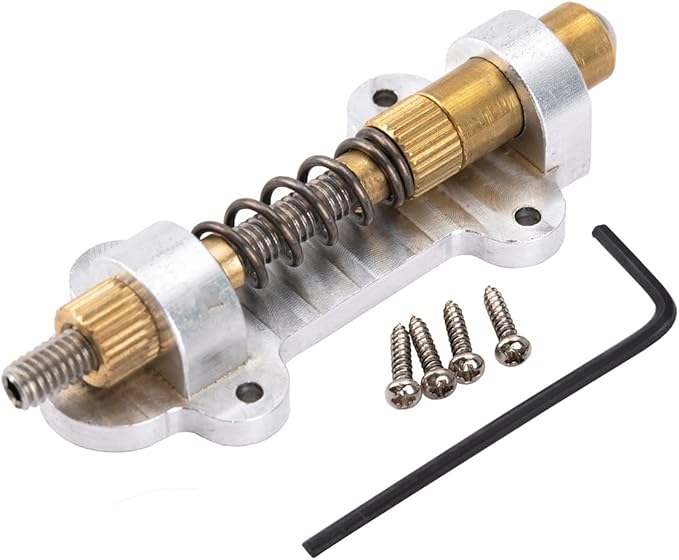
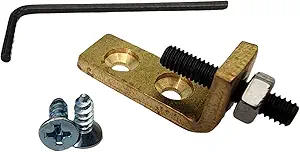
The third is a tremolo blocker, which completely blocks your Floyd’s backward motion, essentially decking the trem. You can get these for as low as $9, but they require drilling two holes and have a small contact area with your Floyd.
This simple tool inspired my DIY Floyd Rose decking solution. I like its simplicity, but I wanted more contact area and hated the idea of my brass block banging against a hard point.
Deck A Floyd Rose With Hardwood
This is the cheapest solution I’ve found and is not hard to do. It costs almost nothing, and it works just as well as the blocker, if not better. First, you must study how your springs are installed and the space beneath them.


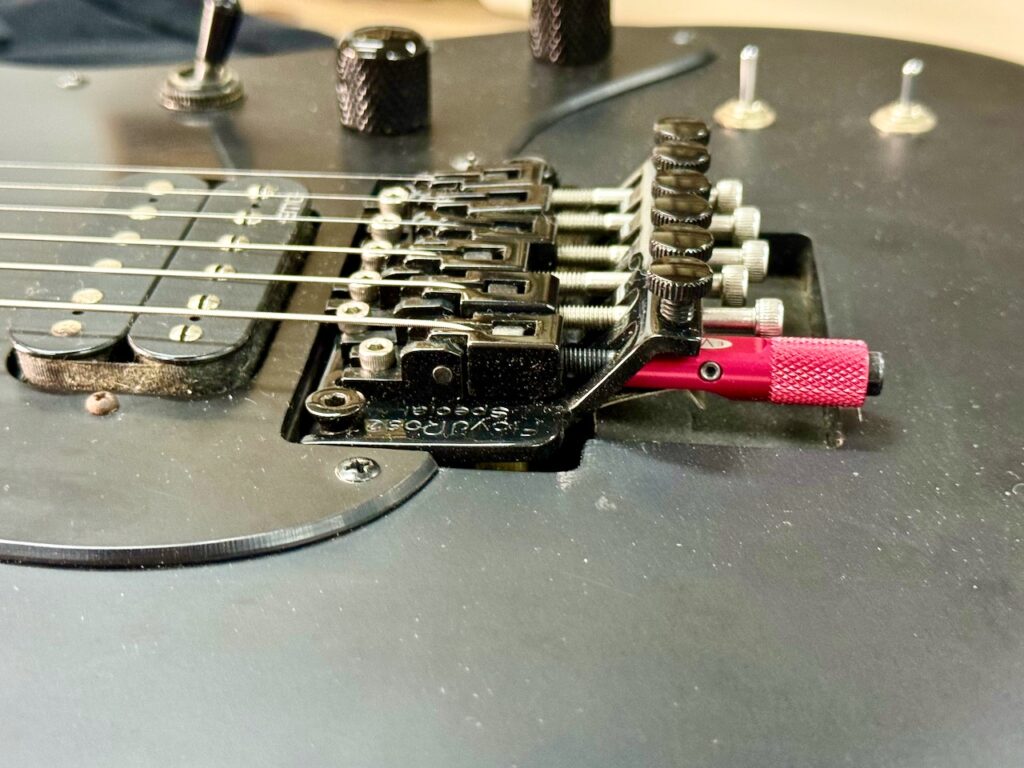
As the image shows, a spring configuration like this makes it easy to install the hardwood needed to deck your Floyd Rose. The space beneath the Floyd varies from one guitar to another and determines how thick your piece of hardwood should be.
You also need to set your Floyd Rose height and spring tension until they are parallel to the body. In other words, get your Floyd Rose setup to the point where you are completely happy with it, and the tuning is stable.
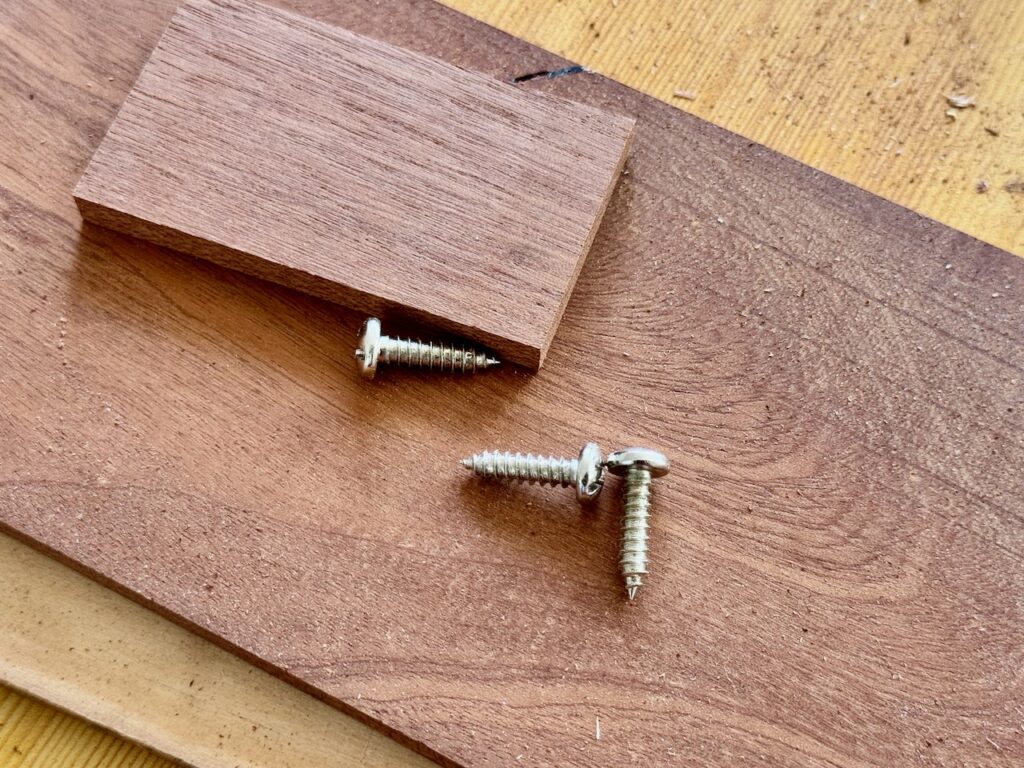

You need only a small piece of hardwood (or plywood) that is 1/8″ (3mm) thick, plus two pan head screws. Pan head screws are rounded on top and flat at the bottom. Using your table saw, hand saw, or a chisel. Create two grooves that align with the spring hook holes on your brass block. The width of the groove has to be slightly larger than the width of your screw to allow the wood to be moved slightly when installing.
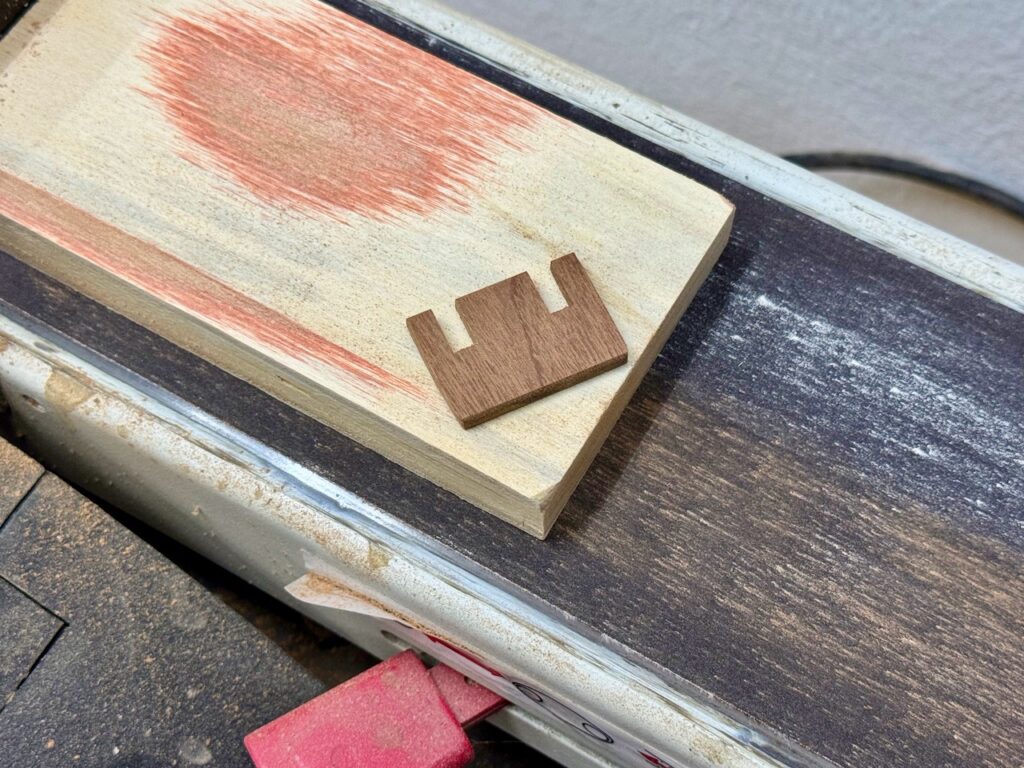
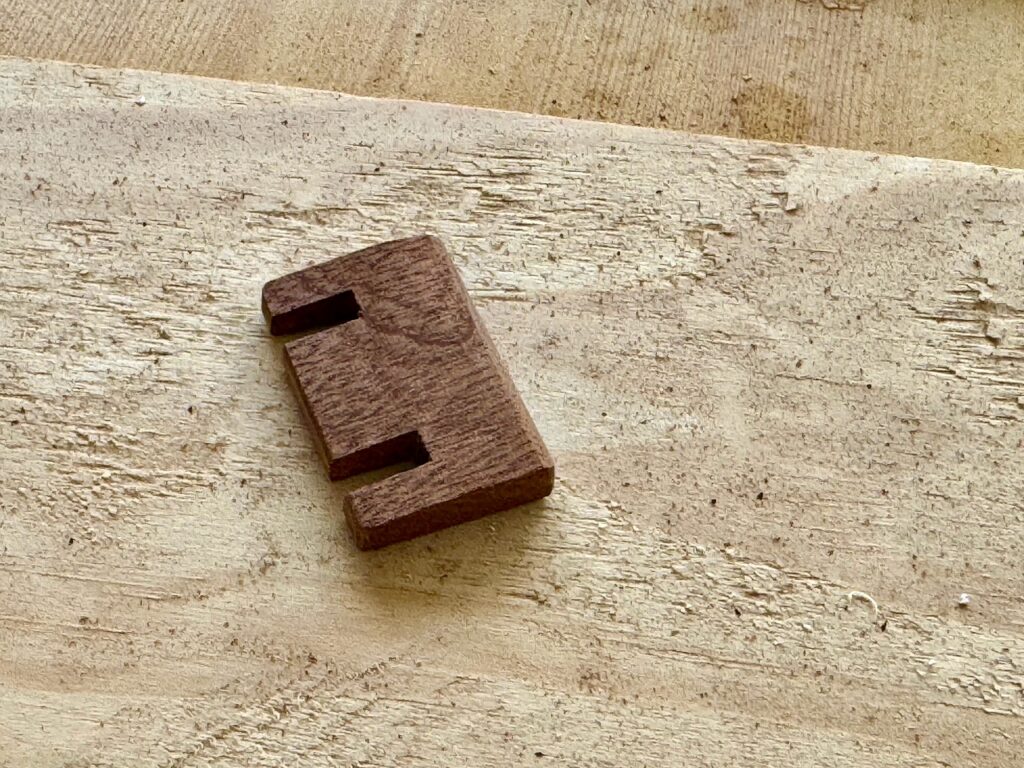
Next, use sandpaper to reduce the size and thickness of your wood stopper until it fits easily below the springs without having to remove them. Round off the edge that will make contact with the brass block.
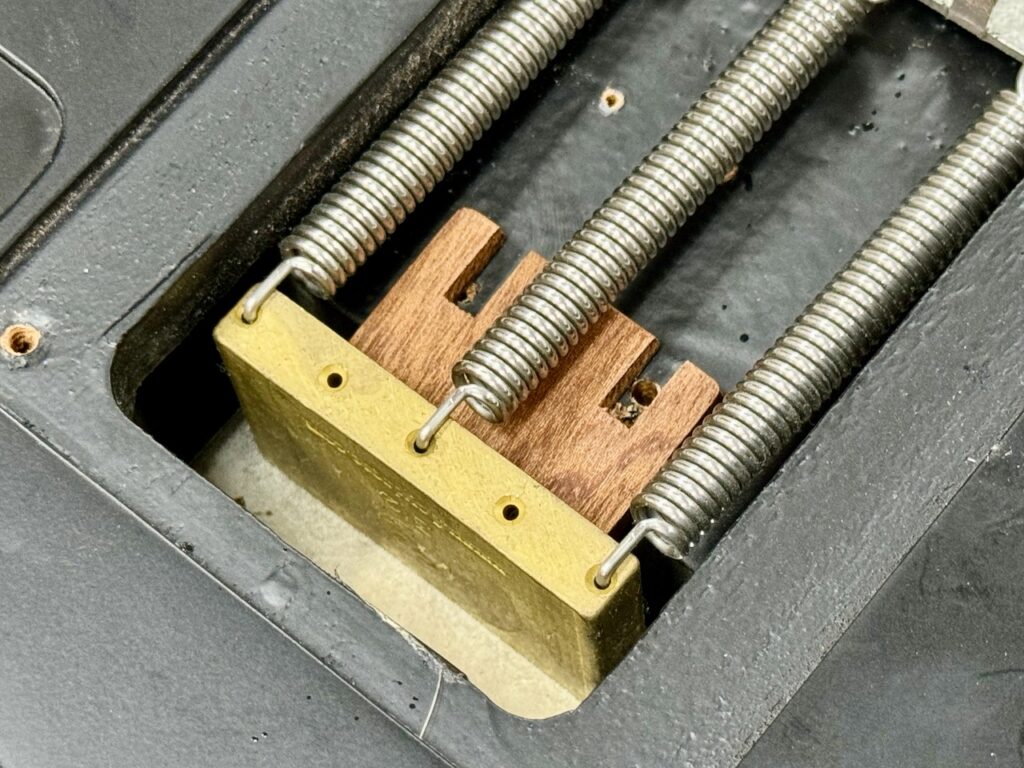

The picture above shows that I’ve made the hardwood block small and thin enough to insert it beneath the springs without having to remove them. Of course, you can also remove the springs if you need to.
Next, loosen the spring by one turn. Then, align the hardwood block and drill two holes in the middle of the groove. The idea here is to make some room for adjustment later or to return your Floyd to full floating mode if needed.
Place the wood block flat against the brass block, but don’t apply pressure, as the bridge will keep moving up if you do. Screw the wood block down, and tighten the spring tension back by one turn. Your Floyd Rose is now decked, and you won’t be able to pull back on it anymore.
To undo this, you can loosen the screw, pull the hardwood block back a little bit, and tighten it down. This will give you the room needed to pull back.
The total cost for me was $0. This simple way to deck a Floyd Rose works just as well as the tremolo stopper tool but has a larger contact area made from wood that is unlikely to damage the brass block.








